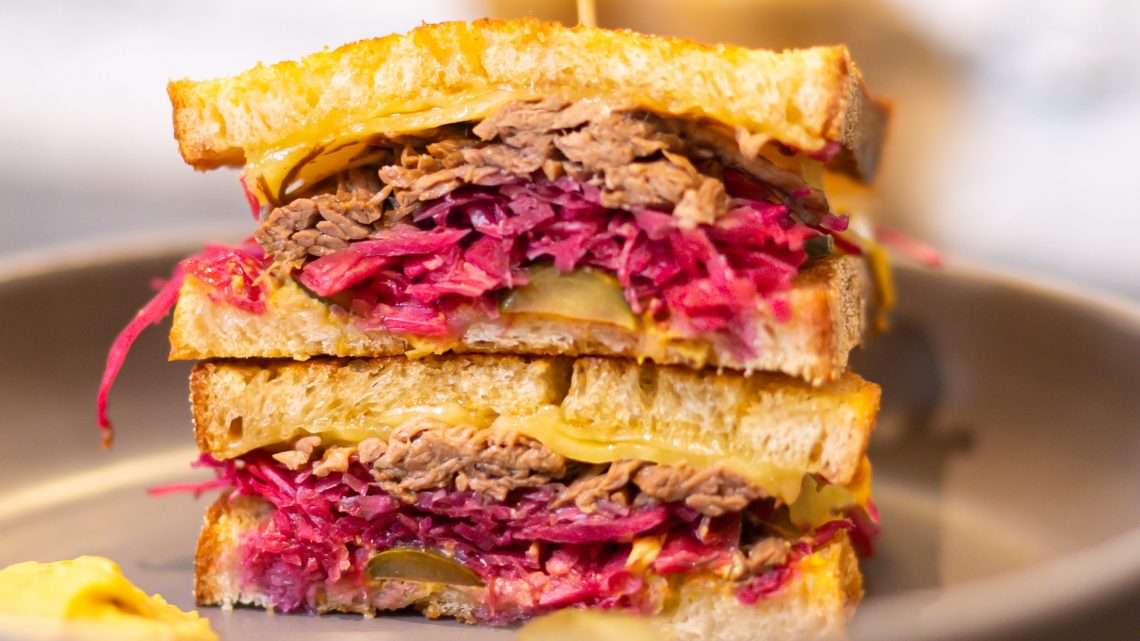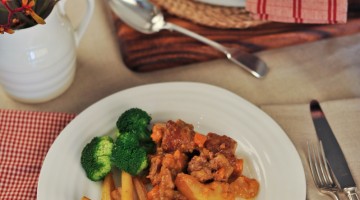Corned Beef or Pastrami: Choosing the Perfect Protein for Your Reuben Sandwich
The Reuben is a beloved classic that has captured the hearts (and taste buds) of sandwich enthusiasts for decades. In this blog post, we will delve into the delightful world of Reuben, exploring its ingredients, variations, and the story behind its name. Join us on this culinary journey as we uncover the secrets of crafting the perfect Reuben sandwich.
What does a Reuben sandwich contain?
Typically consisting of several key ingredients, expertly layered between two slices of rye bread. The classic Reuben includes:
- Corned beef or Pastrami: Traditionally, the Reuben sandwich features corned beef as the primary protein. However, some variations use pastrami, adding a unique flavour and texture to the sandwich.
- Swiss Cheese: Melt a generous portion of Swiss cheese on top of the corned beef or pastrami, adding a creamy and nutty element to the sandwich.
- Sauerkraut: The Reuben sandwich would not be complete without tangy sauerkraut. It adds a delightful crunch and a slightly sour taste that perfectly balances the richness of the meat and cheese.
- Russian Dressing or Thousand Island Dressing: A generous spread of Russian dressing or Thousand Island dressing brings the Reuben together, providing a zesty and creamy element that enhances the overall flavour.
- Rye Bread: Traditionally, slices of flavorful rye bread serve as the base for the Reuben, infusing the sandwich with a distinct taste and texture. However, you can also find variations that use other types of bread.
Is a Reuben normally corned beef or pastrami?
While the classic Reuben sandwich is typically made with corned beef, it is not uncommon to find variations that feature pastrami instead. The choice between corned beef and pastrami often comes down to personal preference. Corned beef offers a tender and slightly salty taste, while pastrami brings a smoky and peppery flavour profile to the sandwich. Whichever protein you choose, both versions of the Reuben are equally delicious.
Why is it called a Reuben?
The origins of the Reuben sandwich’s name are somewhat disputed, but the most popular theory credits its creation to a local grocer named Reuben Kulakofsky from Omaha, Nebraska in the early 20th century. Legend has it that Reuben Kulakofsky himself created the sandwich.
According to the tale, Kulakofsky regularly hosted poker games at his home, and one night he decided to serve his guests a sandwich with the now-famous combination of ingredients. Over time, the sandwich gained popularity and became known as the “Reuben” in honour of its creator.
Recipe: The Perfect Reuben Sandwich
Ingredients:
- 8 slices of rye bread
- 400g corned beef or pastrami (thinly sliced)
- 200g Swiss cheese (sliced)
- 200g sauerkraut (drained)
- 8 tablespoons Russian dressing or Thousand Island dressing
- Butter (for spreading)
Instructions:
- Preheat a griddle or a large frying pan over medium heat.
- Spread Russian dressing or Thousand Island dressing on one side of each slice of rye bread.
- Layer the corned beef or pastrami, Swiss cheese, and sauerkraut on four slices of bread, dressing side up.
- Top each sandwich with the remaining four slices of bread, dressing side down.
- Spread a thin layer of butter on the outside of each sandwich.
- Place the sandwiches on the griddle or frying pan and cook for 3-4 minutes on each side, or until the bread is golden brown and the cheese has melted.
- Remove the sandwiches from the heat and let them cool for a minute before slicing them diagonally.
- Serve your perfect Reuben sandwich and enjoy!
The Reuben never fails to satisfy
The Reuben sandwich, a timeless classic, combines corned beef or pastrami, Swiss cheese, sauerkraut, dressing, and rye bread, satisfying all tastes.. So, whip up your own Reuben masterpiece using our recipe, and savour the mouthwatering blend of flavours in every bite.
From the classic Reuben to the Pastrami Reuben and the legendary New York Reuben, this sandwich is a true culinary gem.













